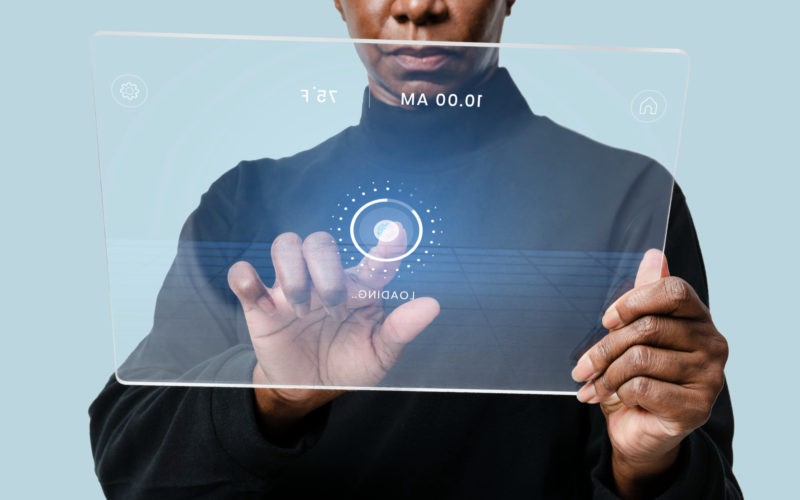When you first hear the term “captcha” you might picture a text box with a series of characters that you must enter in order to access a website, or tiny grids of an image that you must slide and solve, or having to choose an image with a certain object in order to prove that you are human. Although it may frustrate you or cause access delays, its goals are crucial to safeguarding your personal information.
If you are curious about how CAPTCHAs protect your information, how traditional CAPTCHAs and reCAPTCHA work, understand their challenges, and explore new and creative alternatives, you can check this article.
To put it simply, captcha is a technique for online authentication that aids in preventing bots from gaining illegal access to your account. Its name stands for Completely Automated Public Turing Test to Tell Computers and Humans Apart. We’ll go through how CAPTCHA and other forms of online authentication protect your accounts and sensitive information.
Importance of Online Authentication in the Digital Age
Nowadays, authentication is a crucial component of internet security. Only those with the authorization will gain access to the online resources thanks to authentication. This is why you may want to use captcha human verification for business. By doing this, sensitive information is protected. If organizations wish to safeguard information and their reputation, they must utilize authentication security procedures.
More so, organizations are required by law, to implement authentication so as to avoid legal consequences. This way, they comply with laws and regulations binding data sharing and transfer that ensures data protection and privacy.
User experience is improved with the convenience that comes with different authentication methods. Users can access their accounts with simple biometrics authentication or simple captcha verification methods.
Strong authentication helps build trust with partners and customers of an organization, thereby protecting its reputation.
Types and Examples of CAPTCHA
— Image-based Captcha
Image or picture-based captcha is a type of captcha verification of human users that presents users with different kinds of challenges involving specific images. This may include selecting a particular image out of different images or solving a puzzle where you are required to complete a blurred image that has been cut into small grids. Example: select all images with a “car”.
— Text-based Captcha
A text-based captcha is an early form of captcha verification that involves typing exactly what you see in a distorted series of texts into a text box provided. This is a quick way to detect humans from bots because the distorted texts provided cannot be figured out by bots, but relatively easy for humans. Example: hcaptcha
— Audio-based Captcha
Audio-based captcha is an advanced form of captcha. Due to the visual elements in text and image-based captcha, it may prove difficult for users who are visually impaired. This is why audio-based captchas were introduced. This captcha provides a short audio clip to be listened to and the user is expected to type what was heard in the clip. Example: speech-to-text.
— Math problems and logic-based Captchas
This presents simple math problems that require a user to provide answers in a text box. It may also come in the form of a jigsaw puzzle similar to an image-based system. It is advisable to use this method or the audio-based as they have proven more advanced and more secure over time. Example: 8 + 2 =
Emerging Trends in CAPTCHA
— Biometric CAPTCHA
This type is more of an alternative to traditional types of captcha. It records users’ biometrics with fingerprint and iris scanners. This verification method is faster and more user-friendly and many users have found it more acceptable than other authentication methods.
— Behavioral CAPTCHA
This verification system analyzes the behavioral patterns of users. It studies human behaviors and differentiates them from computers. Each individual pattern is recorded and it uses their records over time for authentication.
— Gamified CAPTCHA
This kind of captcha combines game features for authentication with the conventional captcha verification approach. It is more entertaining and user-friendly as it presents interactive challenges and makes it enjoyable for users. This is also known as an interactive Captcha.
Implications and Applications of CAPTCHA
— Effect on Online Fraud Prevention and Security
In order to determine whether a user is a human or a robot, CAPTCHA challenges users to solve puzzles or type text from distorted images. This aids in stopping automated attacks like spamming and breaches.
— Potential Uses Beyond Traditional Online Platforms
With the use of CAPTCHA technology, unwanted access can be stopped in other systems like the Internet of Things (IoT). To provide safe communication between devices, they might be in smart locks or automobiles. The standard web resources are not the only ones available.
— Ethical Considerations and Privacy Implications
Despite CAPTCHA’s significance, there are a few things to keep in mind and ramifications to be aware of. Captcha gathers user information and researches patterns of activity that can jeopardize data security. The use of Captcha systems that adhere to data laws and regulations is essential for this reason.
Final Thoughts
The CAPTCHA verification system aims to increase security and successfully distinguish between human users and bots by advancing with Artificial Intelligence (AI), adding more difficulties, and doing biometric analyses.
The continuous CAPTCHA research will improve the authentication process and address emerging security concerns to provide consumers with a better user experience. This will ensure increased security.












